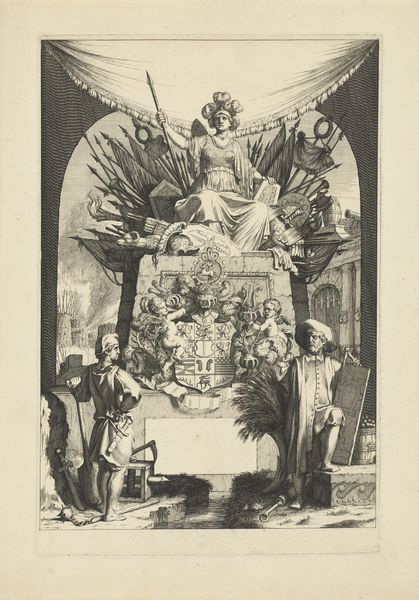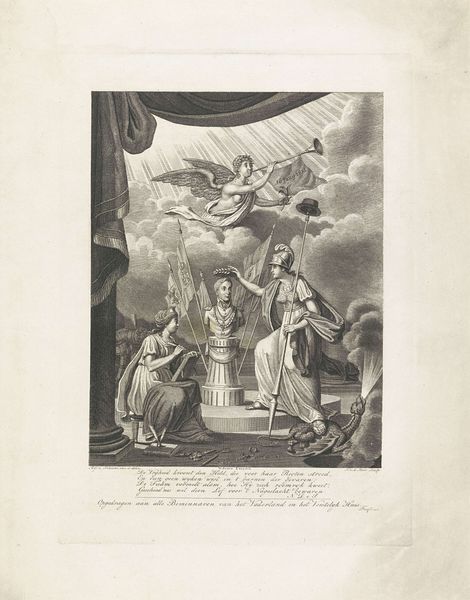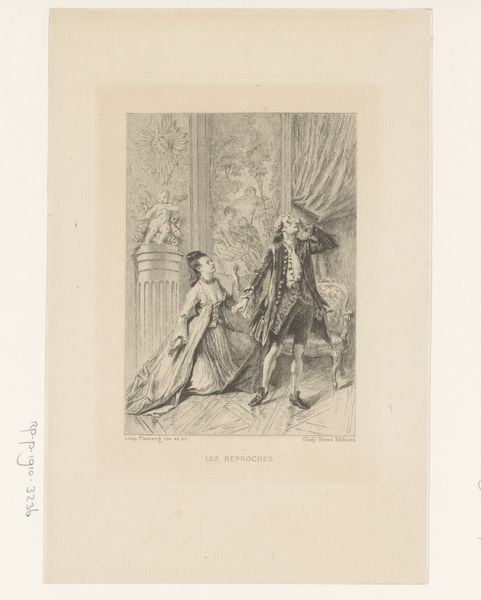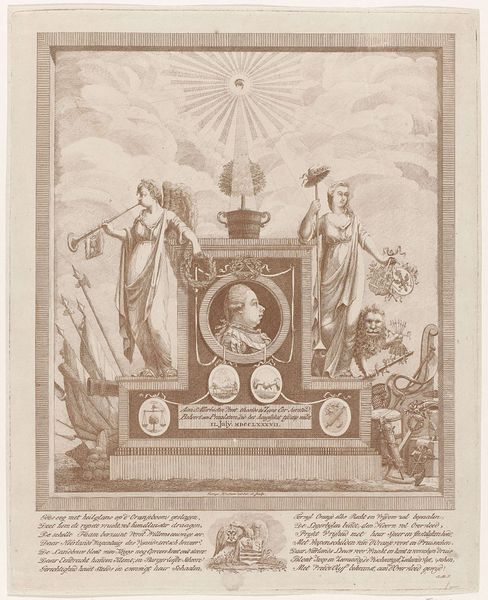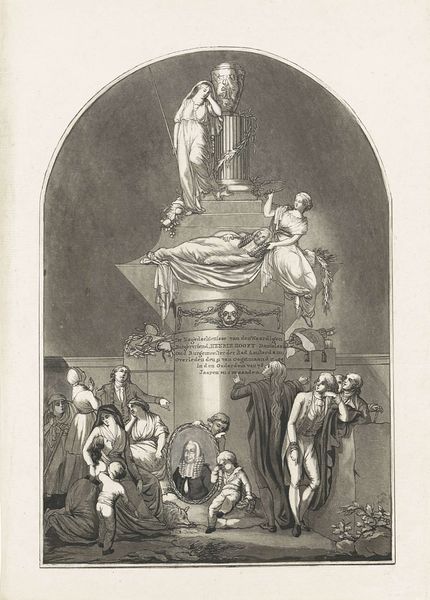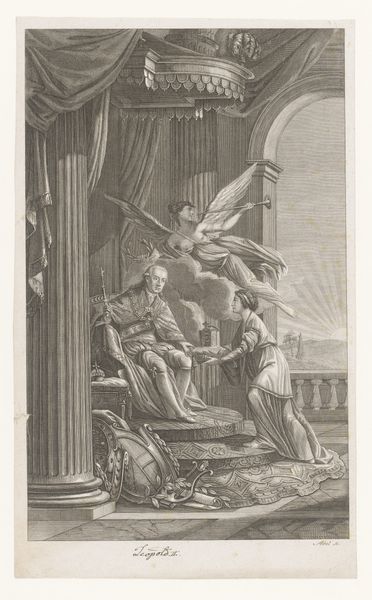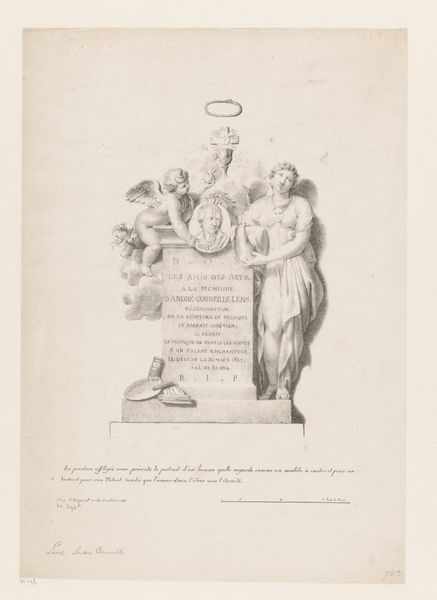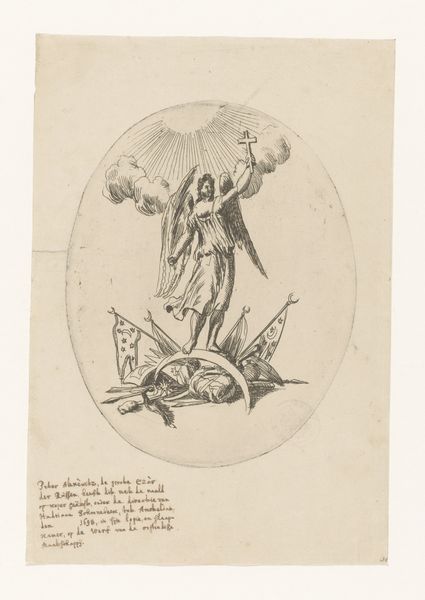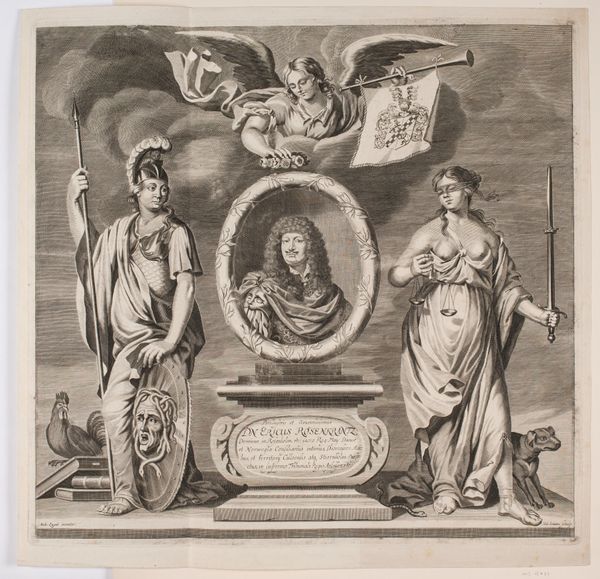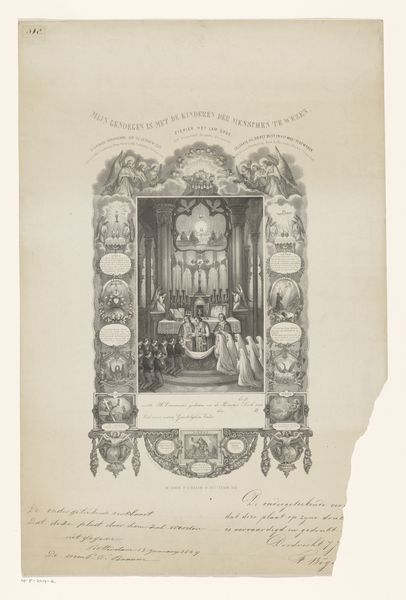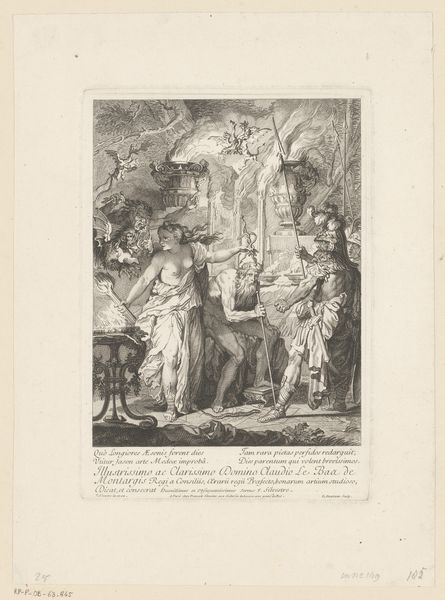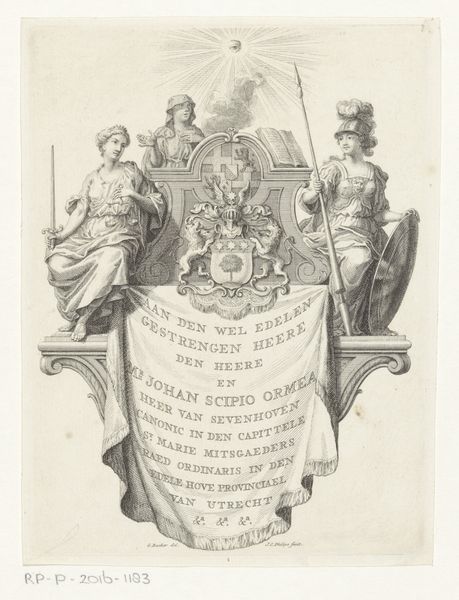
Allegorische figuren brengen hulde aan generaal Chassé en de andere verdedigers van het citadel van Antwerpen 1833
0:00
0:00
print, engraving
#
portrait
#
neoclacissism
#
allegory
# print
#
form
#
line
#
history-painting
#
engraving
#
realism
Dimensions: height 415 mm, width 340 mm
Copyright: Rijks Museum: Open Domain
Curator: This engraving, dating to 1833, is entitled "Allegorical Figures Pay Homage to General Chassé and the Other Defenders of the Citadel of Antwerp," created by Abraham Vinkeles. It's currently held in the Rijksmuseum collection. Editor: My initial impression is one of solemn grandeur. The stark contrast achieved through line work and shading conveys a clear and imposing tone. Curator: It’s an interesting mix of neoclassicism and realism. Notice the idealized figures alongside more representational elements such as the cannons and the lion. Editor: The lion is clearly symbolic, a sort of silent strength, quite regal in posture, guarding... what exactly? The fallen sword adds an element of vulnerability to this otherwise triumphal scene. Curator: I'd argue the lion signifies Dutch courage and fortitude. The sword suggests both victory and perhaps the cost of conflict. Look how the allegorical figure of the Netherlands is placing a laurel wreath on Chassé, surrounded by cannon and flags— it’s pure theatrical construction. The hard lines form a structured order with vertical flags contrasting to the reclining pose of the Lion. Editor: Absolutely, I agree. The architectural backdrop and the placement of objects within this space contribute to the theme of honor. The flags and cannon elevate the bust and commemorate his defense. It serves almost like a stage for Dutch patriotism. Note the figure inscribing something, recording this historical occasion for posterity, perhaps? Curator: Precisely! And that plaque above Chassé… one can presume it bears the names of those heroes who served under him in Antwerp. Editor: So, through symbolism and allegory, Vinkeles isn't merely depicting a scene; he's constructing a narrative of valor and remembrance. A testament to resilience etched in stark monochrome. Curator: Precisely. What initially strikes one as a static, historical depiction is, in fact, a dynamic representation of the cultural values that were highly prized during this era. Editor: It makes me reconsider the potency of engravings in solidifying collective memory, how readily they could circulate and perpetuate specific values across a young kingdom.
Comments
No comments
Be the first to comment and join the conversation on the ultimate creative platform.
